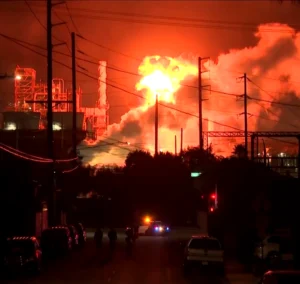A new bill aims to address the truck driver shortage by implementing tax credits.
A new bill, reintroduced by Congressman Zach Nunn, aims to address the truck driver shortage by implementing tax credits. The “Supply Chain Strengthening Act Through Truck Driver Incentives” would offer tax exemptions to both experienced and new truck drivers in order to encourage hiring and retention of more drivers in the road transport industry.
The bill proposes a refundable tax credit of up to $7,500 for truck drivers who work at least 1,900 hours a year. Additionally, new drivers and apprentices would receive an enhanced tax credit of up to $10,000. However, the tax relief would only be available for two years and would be accessible only to those whose income does not exceed the established limits.

Incentives for truckers: mixed opinions
The proposal has sparked mixed reactions. Supporters argue that this measure will help resolve supply chain issues, while critics contend that the real problem is not the shortage of drivers, but the high turnover in the sector, driven by low wages and poor working conditions.
In a statement, Nunn said, “We are facing a severe truck driver shortage, which is impacting our nation’s supply chains.” The congressman emphasized that this measure would improve the supply chain while addressing the recruitment and retention problem.
However, multiple studies conducted in recent years have cast doubt on the existence of a real truck driver shortage. Research from the U.S. Department of Labor and economist Stephen V. Burks has pointed out that the issue is more related to employee turnover due to low wages and poor working conditions than a lack of available drivers.
Truck driver wages vary considerably depending on the type of work and employer. According to the Bureau of Labor Statistics, the average salary for a heavy truck driver in 2022 was $53,090 per year, though estimates from sources like Indeed.com suggest that truck drivers could earn an average of $93,298 annually by 2025. Nevertheless, salary remains one of the main reasons truck drivers leave their jobs.

Shortage of drivers or turnover: what is the real problem in the industry?
Despite previous legislative efforts, such as the 2023 version of the bill, which gained only seven co-sponsors, this new attempt may face a similar challenge. Supporters hope that the tax credits will attract more drivers to the sector, though there remains doubt about whether this solution will be effective if the true challenge lies in improving wages and working conditions within the industry.
Industry experts, economists, and truckers will be watching closely to assess whether this bill gains support or becomes another legislative effort that fails to address the underlying problem.

World Smile Day: benefits of sharing a smile
World Smile Day is celebrated on the first Friday of October, so let’s do an act of kindness and help one person smile. World Smile

Massive fire at Chevron refinery sparks safety concerns and fuel price fears
A massive fire broke out at Chevron’s refinery in El Segundo, the largest oil production facility on the West Coast. On the night of October

MEET operation: 82 commercial vehicles inspected at the Wyoming-Colorado border
The MEET operation, a traffic enforcement operation targeting CMVs, was carried at the Wyoming and Colorado border. A traffic enforcement operation targeting commercial motor carriers,

Road safety reforms: coalition demands for results
The Truck Safety Coalition (TSC) calls for road safety reforms following deadly truck crash report. The Truck Safety Coalition (TSC) is calling for safety reforms

DOT suspends federal funding in New York amid civil rights review
U.S. DOT announces interim final rule banning race- and sex-based contracting requirements in federal grants. The U.S. Department of Transportation (DOT) has issued a statement

U.S. government shutdown begins: how will the transportation industry be affected?
A U.S. government shutdown began a shutdown on October 1, 2025, but the Department of Transportation released its operational plan. The U.S. government shutdown began
